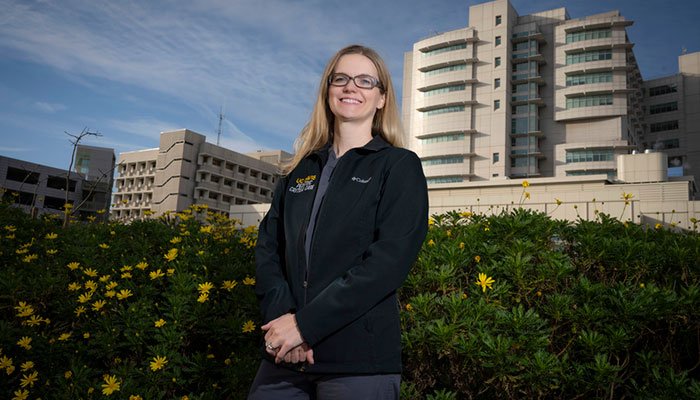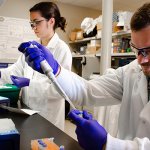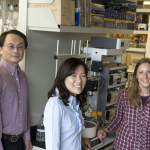UC Davis Affiliated Startup Aims to Improve Detection of Congenital Heart Defects in Newborns

Heather Siefkes, assistant professor of pediatric critical care at UC Davis Children’s Hospital, and founder of the startup NeoPOSE, signed a letter of agreement for the exclusive rights to commercialize a new technology developed at UC Davis that could improve the detection of congenital heart defects in newborns.
According to the Centers for Disease Control, roughly 7,200 babies in the United States are born with a critical congenital heart defect (CCHD) every year. The condition is life-threatening and prevents the heart from circulating blood effectively throughout the body.
The current approach to screening for these defects uses pulse oximetry. The non-invasive, painless and low-cost test measures oxygen saturation in blood as an indicator of how well oxygen is supplied to tissues through the body. All states now require the screening. Siefkes herself helped get legislation passed in Oregon — testifying in support of the screen as legislation was being considered.
“The mandate by states was a tremendous step forward to help screen, but unfortunately, an estimated 15 percent of critical congenital heart defects still go undetected,” said Siefkes. “And, when it comes to such heart defects, the timeline for detection is critical.”
Siefkes personal clinical experience bolsters her motivation to continue to improve detection. She recalls one event in particular when a two-week-old baby came to the emergency room very sick.
“It was clear that the baby had a heart defect that was not detected by the oximeter test,” she said. “The late diagnosis contributed to the unfortunate death of the baby and lit a fire in me to explore research to prevent such tragedies from happening again.”
“Pulse oximetry is good at catching defects that cause poor oxygenation of the blood flow, for example, when the pathway from heart to lung and back to heart is interrupted,” she said. “But conditions that obstruct blood flow to the body, such as coarctation of the aorta, are only detected about one-third of the time by oxygen saturation screening.” Coarctation of the aorta, or narrowing of the aorta vessel, is one of the most common critical heart defects.
To address the gap, Siefkes looked to enhance the current screening tool, knowing it could be the quickest path to clinical acceptance.
Pulse oximetry can also be used to quantify blood flow to pick up abnormalities caused by obstructions to flow to the body, but the variability in the data over time makes that impractical to interpret and apply in a clinical setting. As a practicing clinician, Siefkes knew the data would need to be processed in a manner that would make it clear and actionable.
Siefkes enlisted the help of graduate students, and Professors Chen-Nee Chuah and Satyan Lakshminrusimha to develop a screening algorithm that combines non-invasive measurements of perfusion, oxygenation and waveform characteristics.
In 2019, the team received a Eunice Kennedy Shriver National Institute of Child Health and Human Development (NICHD) award and a National Center for Advancing Translational Sciences (NCATS) grant to conduct a clinical study at six hospitals. The objective was to develop a machine learning/artificial intelligence model to identify the perfusion (blood flow) value that can predict CCHD.
In 2020, Siefkes received internal funding through a proof-of-concept grant from the Venture Catalyst Data, Informatics and Application Launch (DIAL) program. The program provides grants up to $20,000 to advance research and innovations with commercial potential.
The team has enrolled 300 patients to date and looks to complete enrollment this fall. Once the study is complete, the team will conduct a follow-up study to validate the algorithms developed during the initial study.


